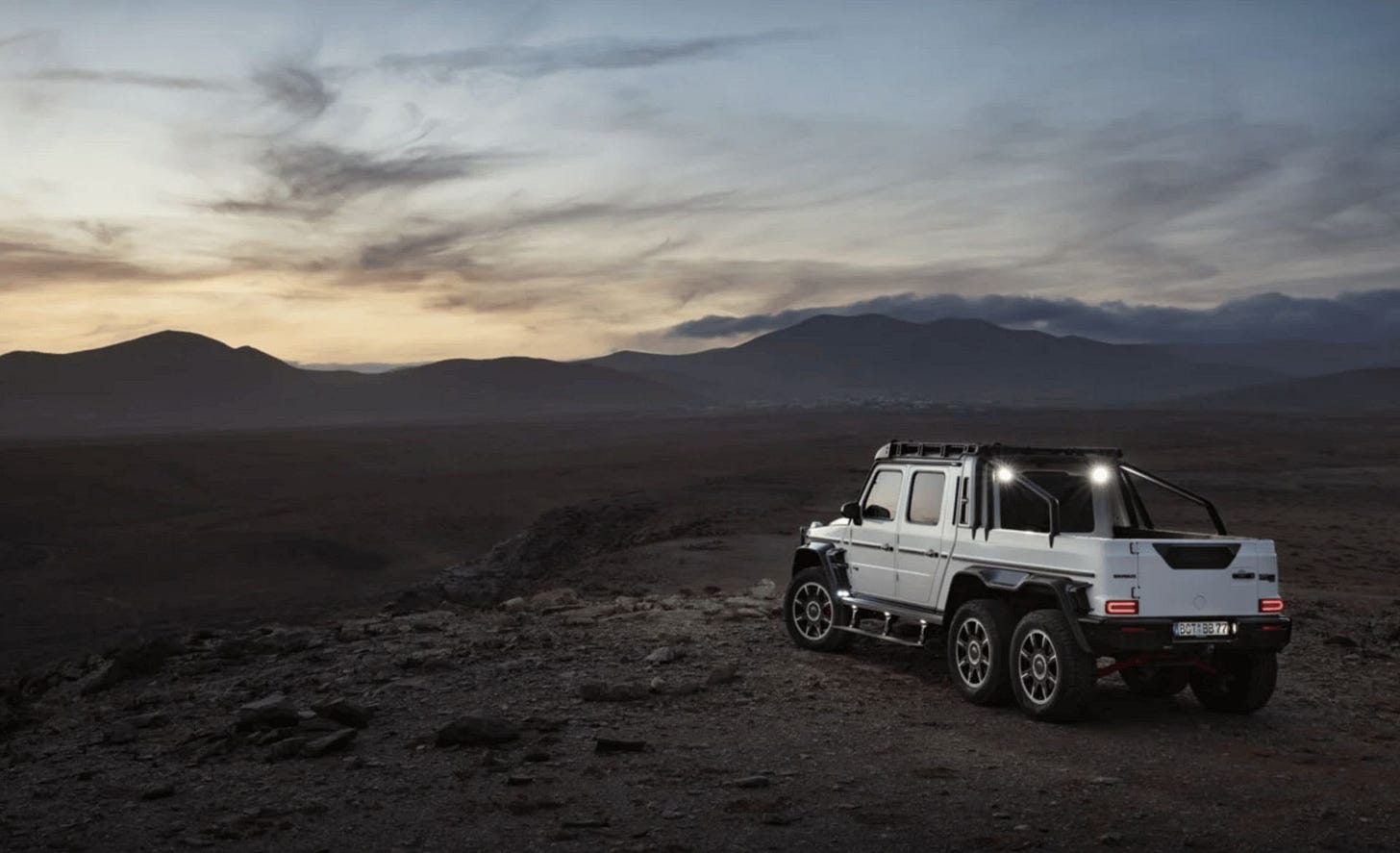Render Time: August 18 Edition
Idea factories, algorithmic stars, and YouTube’s climb into TV’s throne.
This week pulled back the curtain on what it really takes to dominate YouTube as reports show the platform has officially crossed into streaming-giant territory: 12.8% of U.S. TV viewership, with creator-led series commanding audiences once reserved for cable.
For the creator class, the real story isn’t YouTube competing with Hollywood. It’s YouTube raising its own Hollywood. Business Insider exposed the inner workings of MrBeast’s empire proving that YouTube’s biggest creator now runs more like a Hollywood studio.
And if one creator can build a studio this massive inside YouTube, what happens when the next generation of YouTube natives start chasing their own empires?
Headlines at a Glance
YouTube creators now command 12.8% of TV viewership, with more watch-time on living room screens than phones. Read more
“Cheapfake” AI celeb clips are rage-baiting audiences and gaming YouTube’s algo. Read more
F1: The Movie speeds to streaming after a legendary cinema run, landing on your screen August 22. It dominated the sports film genre with over $577 million worldwide. Read more
The Washington Post launches a Creator Network, tapping AI-driven storytelling. Read more
VCs double down on creator tools $1.5B poured into creator-economy startups like Substack and Whatnot, and the market’s on pace for $480B by 2027. Read more
Dashverse raises $13M to script short-form thrillers AI startup bets on binge-worthy bite-sized stories. Read more
MrBeast’s Viral Factory, Exposed
John Nacion/Alexi Rosenfeld/Jon Kopaloff/Getty Image; Alyssa Powell/BI
What does it take to keep 400 million subscribers fed with spectacle?
Business Insider recently spoke with nine former MrBeast staffers, and what they described sounds less like a YouTube channel and more like a studio in exile. At the center is an idea factory:
Based not in Burbank but in Greenville, North Carolina.
Teams generate hundreds of titles and thumbnails a week, logging them in a database. Most never survive, and if Donaldson labels an idea “cringe,” it’s DOA.
From there, the Greenville content machine takes over. Sets are built in-house, “friends of friends” handle logistics, and parallel teams (A, B, and beyond) juggle productions that can involve hundreds of cameras rolling nonstop.
Editing is just as intense.
Weeks of footage cut in real time by teams of up to eight editors, each tracking retention down to the exact second. MrBeast’s really running a viral R&D lab, blending Hollywood-scale sets with analytics precision.
With 350 staff, hundreds of concepts, custom-built sets, and challenges filmed with hundreds of cameras, MrBeast’s operation doesn’t just resemble a studio. It is one.
Editing is dictated by retention analytics, and projects can be killed mid-stream even after six-figure spends.
By every measure that matters, this is a Hollywood.
Which leaves the bigger question: is there a future where one-person YouTube empires can actually compete head-to-head with Hollywood studios and broadcasters?
Or are we already there?
YouTube: The New TV Tower
YouTube now commands 12.8% of all U.S. TV viewership, and more than half of its watch time happens on actual television screens, not phones.
Translation: YouTube is no longer “just for vloggers.” It’s a bona fide streaming platform competing with Netflix, Hulu, and broadcast networks.
Longer, episodic content is the key driver here.
Documentaries, serialized explainers, cinematic travel vlogs with format experiments that look suspiciously like TV shows, just with tighter budgets and smarter distribution.
Implications for creators:
Expect rising pressure to increase production values. Lighting, audio and set design.. The casual vlog era is over for anyone chasing scale.
Series planning matters more than ever. Single hits are nice but episodic content (even in vlog form) builds audiences.
Budgets are shifting. Brands, agencies, even Hollywood execs are now eyeing YouTube channels as viable production partners.
And make no mistake, these higher production values don’t come cheap. As podcaster Chris Williamson (of Modern Wisdom fame - $3.8M subs ) recently broke down, a single episode can run anywhere from $15,000 to $80,000, depending on crew, gear, and location.
That’s for a video podcast, by the way. Just Two people talking across a table.
Factor in grips, gaffers, trucks full of lighting rigs, insurance, and union rates, and suddenly you’re flirting with the budget of a low-end indie film.
All for a conversation you could technically have on Zoom. But that’s the entry fee if you want to play in YouTube’s big leagues.
Creator Empires: From Smosh to Mythical
Smosh Reborn: Anthony Padilla and Ian Hecox have reclaimed control of their sketch-comedy crown, buying back the brand from Mythical Entertainment and steering it back toward indie freedom. Read more
Rhett & Link Invest: Mythical’s $5 million Creator Accelerator fuels next generation of creator-led media ventures. Read more
The Post Bets Big: The Washington Post is building a new Creator Network, bridging AI with personality-driven storytelling under editor-in-chief Sara Kehaulani Goo. Read more
The Rise of the Clippers
Not everyone can run a 100-person content factory but a new economy is booming.
The Clippers.
These are creators who slice long-form podcasts, Twitch streams, or vlogs into 60-second snippets and get paid disgustingly well for doing-so.
Kanoah Cunningham is one of them.
At 24, he walked away from a corporate finance job to build an eight-person clipping team that now earns $20,000–$30,000 a month. Their job involves scouring long-form content, cutting out the buzziest 30 seconds, and flooding TikTok and Instagram with bite-size clips.
Startups like Lovable, Nothing, and 1X Robotics are already paying clippers to make product launches go viral. One campaign for 1X’s humanoid robot, managed through a Discord-based clipping marketplace, generated 500 million TikTok views in a single week.
The business model is straightforward. Clippers earn between 50 cents and $2 per thousand views, creating financial incentive to find the most provocative moments.
A single podcast clip about a $200,000 car, slapped with the caption “No way this person just bought the most expensive car in the world,” can rack up millions of plays. Truth strictly optional.
Platforms love it, because clips keep feeds alive. Audiences love it, because it gets to the point. Creators love it, because clippers multiply their reach far beyond one channel.
And for a new creator class of twenty-something editors, it’s quit the cubicle, slice up someone else’s podcast, and walk away with a six-figure income.
Creator Product Updates
YouTube Studio now lets you edit auto-dubbed videos directly, doubling your multilingual reach. Read more
Meta’s Edits App adds safe-zone mapping, keyframes, and richer insights: free tools keep eating paid software’s lunch. Read more
Meta’s AI Ad Tools deliver a 7% lift in clicks for brands, proof that AI video ads aren’t hype, they’re ROI. Read more
Silicon Splurges
LIT DUO-1 Six-in-One Light Meter $548.94
Pocket-sized wizardry for filmmakers, measuring everything from lux to flicker, color temp to CRI. Overkill for TikToks in your bedroom, essential if you’re chasing Blade Runner vibes in a parking garage.
Unistellar Envision AR Smart Binoculars $1499
Binoculars that layering AR star maps and wildlife data over your view, turning stargazing into a HUD mission and birdwatching into a sci-fi side quest.This $1.3 million, 800-hp Mercedes G-Wagen conversion from BRABUS is built to conquer new worlds.




